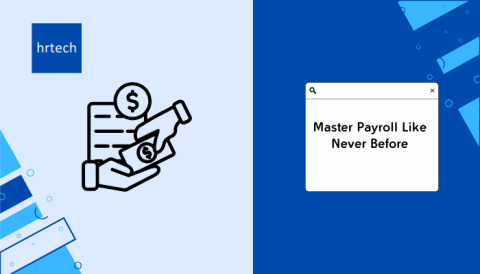An effective HR talent acquisition strategy is essential for attracting and keeping top talent. It’s not just about filling open positions; it’s about making sure hiring efforts support the company’s long-term goals. By focusing on future staffing needs, finding the right candidates, and using modern recruitment tools, businesses can build a strong team that helps them grow. This article will cover the key parts of a successful talent acquisition strategy and how it can benefit your organization.
This blog delves into how to define an effective HR talent acquisition strategy, breaking down its components and how they integrate with talent management efforts. By leveraging technology and implementing best practices, companies can enhance their recruitment processes.
What is a HR talent acquisition strategy?
A HR talent acquisition strategy is a long-term, structured approach used by HR to identify, attract, and hire skilled workers who fit the company’s needs. It’s more than just filling vacancies; it’s about aligning hiring efforts with the organization’s future goals, ensuring the right talent is brought in to drive growth and success.
This report is a “ready reckoner for HR professionals, business leaders, and industry stakeholders seeking strategic guidance in their quest to attract, retain, and optimize talent on a global scale.”
Key elements of an HR talent acquisition strategy include:
- Identifying future workforce needs.
- Sourcing skilled candidates through multiple channels.
- Ensuring a smooth recruitment and onboarding process.
- Aligning hiring efforts with company objectives.
For a deeper understanding of how HR technology plays a role in HR talent acquisition, you can explore more in HR Technology and its Role in Human Resources.
How does it align with organizational goals and integrate with talent management?
An HR talent acquisition strategy aligns with organizational goals by ensuring the recruitment process focuses on attracting talent that supports the company’s long-term vision. It integrates with talent management by seamlessly connecting hiring with onboarding, employee development, and retention, creating a continuous cycle of growth and improvement. This alignment helps optimize resources, ensuring that every new hire contributes to the overall success of the organization.
| Aspect | Explanation |
| Alignment with Organizational Goals | Make sure the hiring process focuses on bringing in people who help achieve long-term business goals. |
| Strategic Workforce Planning | Helps predict future staffing needs so that hiring supports business growth. |
| Integration with Recruitment | Makes the hiring process smoother to attract people with the right skills and fit for the company. |
| Seamless Onboarding | Ensures new employees are smoothly brought into the company, improving their satisfaction and retention. |
| Collaboration with Talent Management | Works closely with talent management to hire, develop, and keep employees, improving overall team performance. |
What Are the Key Components of a Talent Acquisition Strategy?
Understanding and effectively implementing a HR talent acquisition strategy requires several key components. The journey often begins with conducting an organizational needs analysis. This step is all about getting a clear picture of what the company currently has and what it needs in terms of human resources.
It’s a time to look at current workloads, consider the company’s business objectives, and identify any workforce gaps. The idea is to make sure that any new hires fit into the company’s strategic goals, both now and in the future.
1. Organizational Needs Analysis and Job Requisition Approval
This step ensures the organization identifies its specific hiring needs and secures the necessary approvals to initiate recruitment. It focuses on aligning recruitment efforts with current and future workforce requirements.
- Identify required skills.
- Obtain hiring approvals.
2. Development of Employer Branding and Candidate Engagement
A strong employer brand is essential for attracting high-quality talent. Engaging candidates through various communication channels ensures they have a positive experience throughout the recruitment process.
- Strengthen employer brand.
- Engage candidates through communication.
3. Creation of Ideal Candidate Profiles and Selection Criteria
Defining the ideal candidate profile helps streamline the selection process. By outlining specific skills, experience, and cultural fit, the organization can ensure it hires candidates who align with its goals.
- Define skills and experience.
- Outline cultural fit requirements.
Learn more about recruitment tools that can enhance your efforts in the Top Types of Recruiting Tools.
Using Technology to Improve Talent Acquisition
The changing job market, technology is crucial for successful HR talent acquisition strategies. Modern advancements like AI and data analytics make the recruitment process more efficient by helping companies quickly screen candidates, enhancing both speed and quality.
For example, AI-powered tools can scan through massive amounts of resumes to pick out the best matches based on desired skills and experiences. According to a study by IBM, this method boosts the overall quality of candidates by 70%.
1. AI and Data Analytics for Efficient Candidate Screening
AI and data analytics help streamline the recruitment process by automating candidate evaluation, ranking applicants based on specific criteria, and saving HR teams valuable time.
- Automates screening processes to reduce manual effort.
- Uses algorithms to rank candidates based on skills, experience, and cultural fit.
2. Human Capital Management (HCM) Suites and Applicant Tracking Systems (ATS)
HCM suites and ATS solutions enable HR talent acquisition teams to manage every step of the recruitment process in one platform. These systems track candidates, enhance communication, and ensure regulatory compliance.
- Centralises recruitment processes for easier management.
- Tracks candidate progress and automates communication with applicants.
3. Job Posting and Candidate Sourcing Tools
Job posting tools and sourcing platforms allow recruiters to target a larger talent pool and reach both active and passive candidates. These tools improve visibility and optimize job ads for better results.
- Increases reach to a diverse pool of candidates.
- Optimises job postings for higher visibility and engagement.
By leveraging these technologies, HR teams can enhance HR talent acquisition efficiency and make better hiring decisions. For more on HR database systems, check out the Understanding HR Database Systems.
Key Best Practices for Effective Talent Acquisition Strategy Implementation
Building a successful HR talent acquisition strategy involves implementing best practices that communicate your company’s core values and attract top candidates. Building a strong employer brand and enhancing company presence.
| Best Practice | Description | Key Actions |
| Building a Strong Employer Brand | A strong employer brand attracts top talent by showcasing company values and culture. | Share your culture through social media, employee stories, and branding campaigns to boost your company’s image. |
| Using Diverse Sourcing Channels | Expanding recruitment channels increases access to a diverse talent pool. | Leverage social media, job boards, and referrals. Use targeted recruitment marketing for specific candidate profiles. |
| Offering Flexibility and Inclusivity | Flexible work options and inclusive hiring appeal to a broader range of candidates. | Offer remote or hybrid work. Ensure job postings and interviews are inclusive and free of bias. |
How to Measure the Success of Your Talent Acquisition Strategy
Utilizing robust metrics and KPIs is essential in gauging the effectiveness of your talent acquisition strategy. These tools provide vital insights into your recruitment process, highlighting areas of strength and identifying potential bottlenecks.
1. Utilization of Metrics and KPIs – 40%
Metrics like ‘time to fill’ and ‘offer acceptance rate’ are critical. ‘Time to fill’ measures the efficiency of the recruitment cycle, offering a breakdown of how long each stage takes from screening, interviewing, to decision-making.
- Time to fill: Measures how long it takes to close a job vacancy, helping to evaluate the speed of the recruitment process.
- Offer acceptance rate: Tracks how many candidates accept job offers, revealing insights about the attractiveness of the offer and the overall hiring process.
Focusing on these metrics helps HR teams identify bottlenecks, improve their hiring speed, and increase the chances of landing top talent.
2. Evaluation of Candidate Feedback and Process Smoothness – 30%
Evaluating candidate feedback is crucial for understanding how smooth and engaging the hiring process is. A positive candidate experience can lead to higher acceptance rates and solidify your reputation as a desirable employer.
- Candidate feedback: Provides insights into their experience, revealing areas like communication quality, interview clarity, and overall transparency of the process.
- Process smoothness: Evaluates whether the hiring process was seamless, without delays or unnecessary steps. A smooth process enhances the company’s employer brand.
Positive feedback and a smooth hiring process contribute to better candidate experiences, making it easier to attract high-quality talent in the future.
3. Cost Analysis of Talent Acquisition Strategies – 30%
Measuring the cost per hire and other related expenses helps companies assess the financial efficiency of their HR talent acquisition strategies:
- Cost per hire: This metric accounts for expenses such as advertising, recruitment agency fees, technology investments, and internal HR costs. It helps companies optimise recruitment costs.
- Budget optimisation: Effective cost analysis ensures that spending on recruitment delivers the best return on investment without compromising the quality of hires.
By monitoring costs, companies can fine-tune their hiring strategies to remain competitive while managing their budget effectively.
What is the Role of Talent Acquisition Specialists?
Talent acquisition specialists play a vital role in ensuring that an organization attracts and hires the right talent. They are responsible for a range of tasks, including participating in recruitment events, collaborating with department heads to understand hiring needs, and conducting candidate screenings.
These professionals must possess strong communication and analytical skills to effectively identify top talent and ensure a seamless hiring process.
Key Responsibilities and Skills:
- Event Participation: Attend job fairs, networking events, and recruitment drives to identify potential candidates.
- Collaboration: Work closely with department heads and HR teams to understand specific hiring needs and expectations.
- Screening: Evaluate and screen candidates to ensure they meet both the technical and cultural requirements of the company.
- Skills and Qualifications: Strong communication, analytical thinking, and expertise in HR tools are crucial for success.
- Impact: They influence and improve talent acquisition strategies to enhance hiring efficiency and effectiveness.
Latest Trends in Talent Acquisition Strategy
As businesses adapt to a rapidly changing workforce landscape, several trends are emerging that are reshaping the way talent acquisition is approached.
1. Integration of the Gig Economy and Skill-Based Hiring
The rise of the gig economy has reshaped HR talent acquisition, enabling companies to access a flexible and skilled workforce on demand. By focusing on skill-based hiring, organizations can efficiently fill roles with candidates who possess the exact expertise required.
- Leverage freelancers and contractors for short-term projects.
- Prioritize specific skills over traditional qualifications in the hiring process.
2. Use of Generative AI and Data-Driven Recruiting
Generative AI is transforming talent acquisition by automating repetitive tasks and enhancing candidate matching. Data-driven recruiting empowers HR teams to make informed decisions, improving the overall efficiency and effectiveness of hiring.
- Automate resume screening and interview scheduling using AI tools.
- Utilize data analytics to predict candidate success and minimize hiring biases.
3. Focus on Talent Nurturing and Workforce Diversification
Investing in talent nurturing is crucial for retaining top performers and fostering employee growth. Emphasizing workforce diversification enriches company culture and drives innovation within the HR talent acquisition strategy.
- Provide continuous learning and development opportunities.
- Implement inclusive hiring practices to build a diverse team.
Conclusion
A well-planned talent acquisition strategy is crucial for any business aiming for long-term success. By aligning recruitment efforts with the organization’s goals, companies can hire the right people who drive growth and innovation. Additionally, these strategies should evolve as the company’s needs change, ensuring the workforce stays aligned with future goals.
With the rise of hrtech companies can now leverage advanced tools to streamline recruitment and improve decision-making. Technology enables HR teams to adapt quickly and effectively to changing talent needs.
Looking for a platform to optimize your talent acquisition process? Explore marketplaces to discover the best solutions customized to your business needs.





